by Lisa Cooke | Nov 6, 2017 | 01 What's New, Archive Lady, Archives, Beginner, Organization
You may be doing some “home archiving” without even realizing it, if you’re the keeper of any family photos, documents, heirlooms, or artifacts. Professional archivist and genealogist Melissa Barker offers these tips for the family historian and keeper of the family archive.
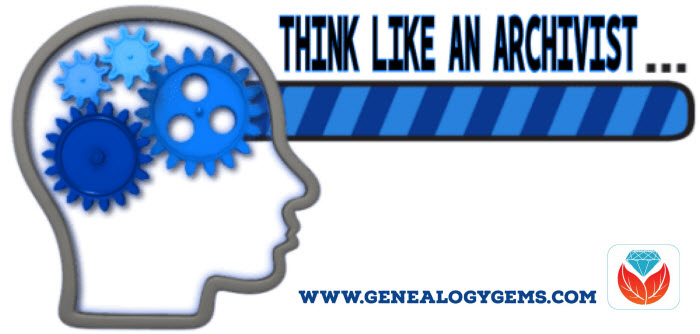
I have always said that “home archiving” is something genealogists do, perhaps without ever calling it that. So family historians can definitely benefit from learning how archivists work. Here are five ways to think like an archivist.
5 Home Archiving Tips for Family Historians
 1. Learn to preserve family artifacts.
1. Learn to preserve family artifacts.
Archivists are always educating themselves on how to preserve certain items that have come to their archives. Genealogists inherit family heirlooms all the time. Learning how to preserve them is thinking like an archivist.
Tip: Preserving an item means keeping it from further deterioration. This may mean putting it in special storage materials, keeping it out of strong light, and storing it in a place that isn’t too hot, cold, or humid. Click here to read an article on humidity and your family archive.
 2. Organize your “collection.”
2. Organize your “collection.”
A very important job for archivists is keeping their records collections organized so they know what they have and can pull them efficiently. Genealogists, as home archivists, would also benefit from keeping their genealogical records organized.
Tip: Get inspired! Click here to catch some tips on organizing your digital photos from Denise Levenick, The Family Curator and author of How to Archive Family Keepsakes: Learn How to Preserve Family Photos, Memorabilia and Genealogy Records.
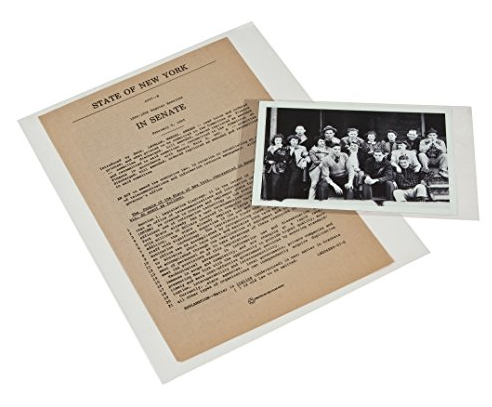 3. Store your treasures carefully.
3. Store your treasures carefully.
Archivists are always careful to use special materials such as archival file folders and boxes to put records and artifacts into for preservation. Genealogists should use archival materials to preserve and store their records just like archivists do.
Tip: Click here to read my article on how to archive family history documents. It’s packed with great tips and recommended products to store your items safely.
4. Keep the stories that go with your artifacts.
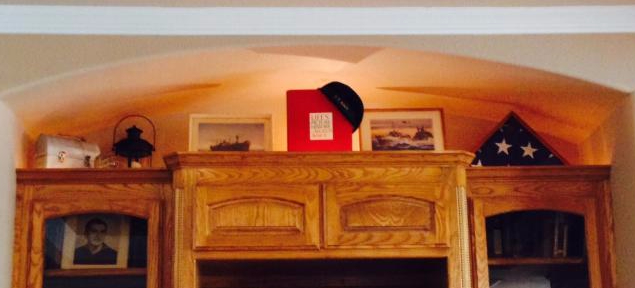 Telling the stories of the people that have come before us is also something that archivist try to do with the records they have in their care. Archivists do this by sharing their records collections with the public through displays, exhibits, and open houses. Genealogists should tell their ancestor’s stories by sharing their family histories with their families and passing down their ancestor’s stories to the next generation.
Telling the stories of the people that have come before us is also something that archivist try to do with the records they have in their care. Archivists do this by sharing their records collections with the public through displays, exhibits, and open houses. Genealogists should tell their ancestor’s stories by sharing their family histories with their families and passing down their ancestor’s stories to the next generation.
Tip: Create a meaningful display of artifacts in your own home. Group together items that tell a story, preferably unique, eye-catching items. Add framed copies of documents and photos (keep originals safely tucked away). Click here for some fantastic ideas from Lisa Louise Cooke on sharing your family history with the non-genealogists in your family.
5. Archive your own mementos.
Archivists collect today for tomorrow! Many archivists collect documents and artifacts that are produced today so they can be preserved for tomorrow. They collect items such as the high school graduation program, digitizing the local newspaper, and that local diner menu.
Genealogists do the same thing in their “home archiving” by collecting and preserving a funeral card, digital photographs they took at the grandbaby’s birthday, and the marriage invitation you received for your niece’s wedding.
 Home Archiving, National Archiving: It’s all in the Genealogy Gems Podcast
Home Archiving, National Archiving: It’s all in the Genealogy Gems Podcast
Did you know I’m on Lisa Louise Cooke’s Genealogy Gems Podcast now? I chime in frequently with that “offline” archival perspective that’s so important in our research. Click here to see the list of recent episodes. In Episode 211, publishing this week, I report on a fascinating way you can help make collections from the National Archives more accessible to everyone. Why not listen in? It’s free!
Disclosure: This article contains affiliate links and Genealogy Gems will be compensated if you make a purchase after clicking on these links (at no additional cost to you). Thank you for supporting Genealogy Gems!
by Lisa Cooke | Jun 22, 2016 | 01 What's New, Cloud Backup, Disaster Prevention
 Don’t be intimidated by signing up for Backblaze, the cloud-based computer backup service I recommend.
Don’t be intimidated by signing up for Backblaze, the cloud-based computer backup service I recommend.
Here’s how to download Backblaze in four easy steps. Protecting genealogy data, family photos, and other files is essential!
I was pretty startled when I discovered that the cloud backup service I used to use wasn’t backing up my video files! That was a deal-breaker for me. So, after reviewing other cloud backup service options, I chose Backblaze. I’m really glad I did. Backblaze runs 24/7 through my internet connection and is constantly saving changes I make to every file. That means if my computer is lost, stolen, destroyed, or hit with deadly viruses, I’ll always have copies of my files and that even includes my large video files!
Genealogy Gems Premium website member Kathy felt a little intimidated about downloading BackBlaze for the first time:
“I received your e-mail yesterday with all the helpful information. I remember you mentioning Backblaze in previous e-mails, and I looked up their website and read the information I could find. However, it did not show the download steps, so I could not tell how difficult it would be and if it would ask me really hard questions that I would not know how to answer during backup, so I didn’t subscribe.
I have had a few external hard drives with backup programs before and they were very difficult and I didn’t want to go through that again. But, I decided that today would be the day, that I would back up my computer…I subscribed to Backblaze. I trust your judgement, so thank you for your advice.”
Have you wondered, like Kathy did, if it would be complicated to set up Backblaze? Has it held you back from taking the leap to protect your files? I want you and our other readers and listeners to feel 100% confident in downloading this awesome back-up service. Here’s how to download Backblaze to your device in four easy steps.
- Click here to go to Backblaze and begin your free 15-day trial by clicking on “Try Free Trial.”
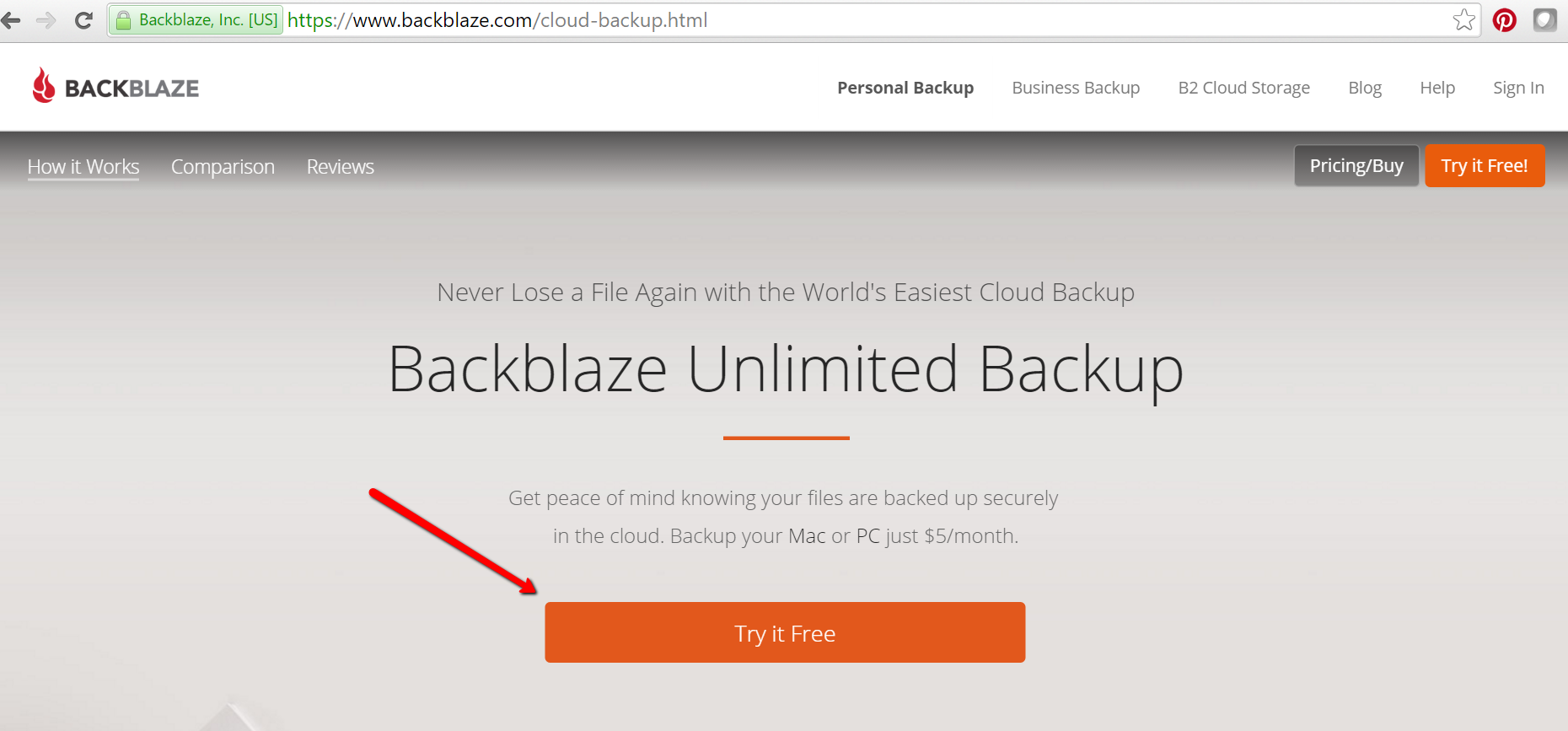
- You will be asked to create an account using your email address and choosing a password. Once you have clicked “Start Backing Up,” a pop up window will appear and you can download Backblaze to your device.
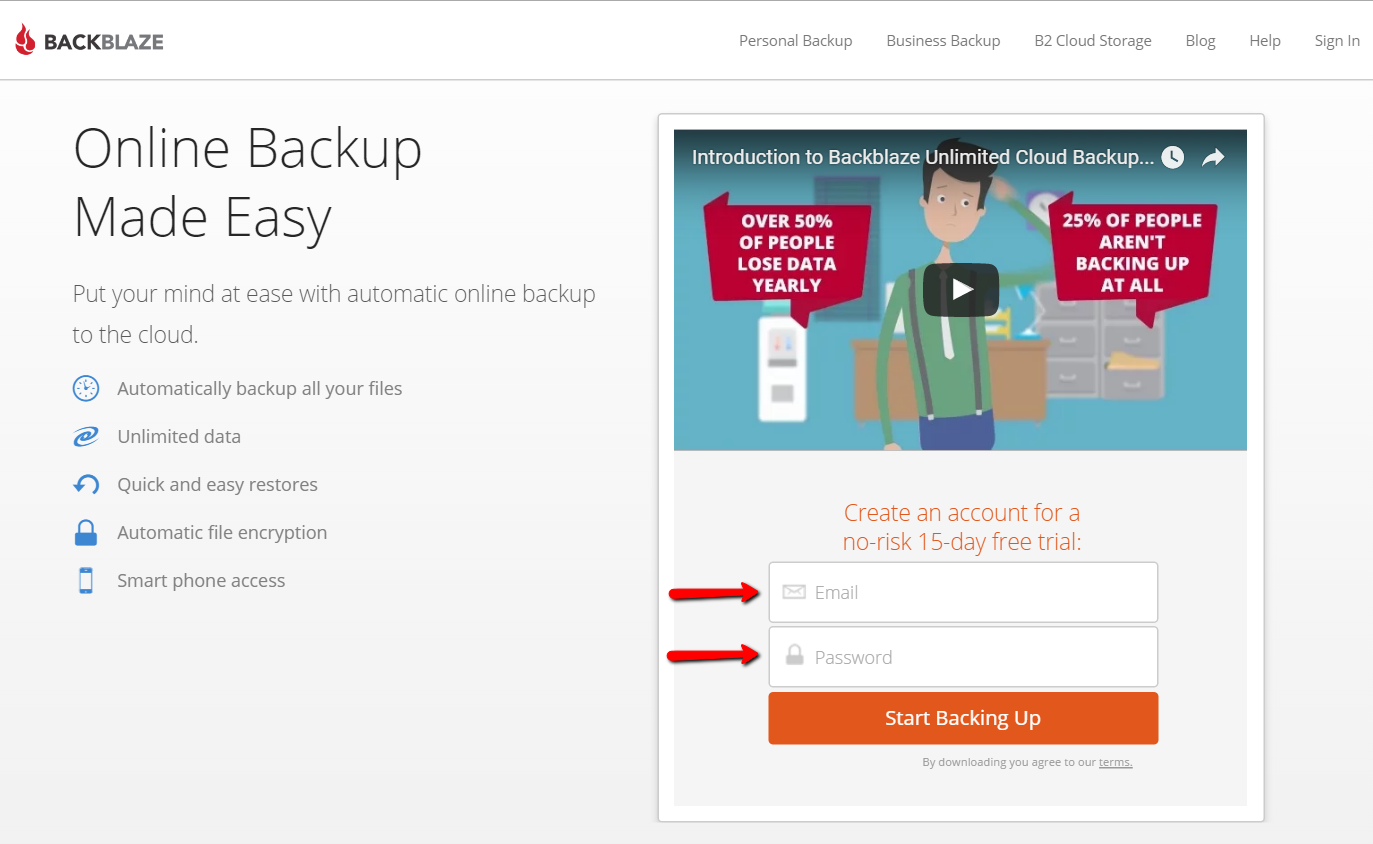
- Next, another pop-up window will ask your permission to install Backblaze to your device. Click “Ok.”
- Wait patiently. Yet another pop-up window will appear and ask you to “Install.” Click “Install Now.” It may take several minutes depending on the speed of your internet connection.
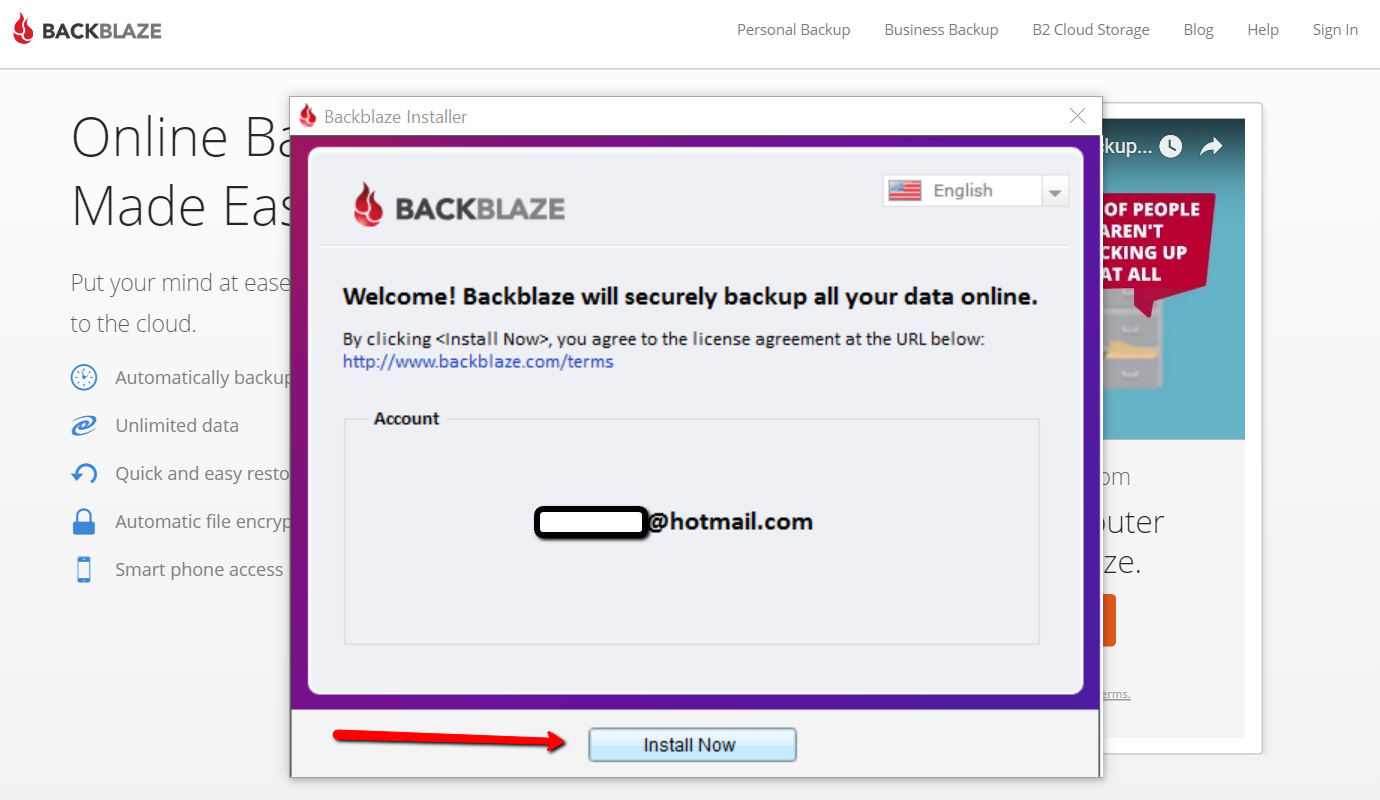
You have now installed Backblaze and the back-up process has begun. You can continue to use your device normally as all your data is backing up.
How to Schedule Your Back-up Time
It is quick and easy to set up a time for Backblaze to back-up your data. By clicking on “Settings,” and then “Schedule,” you have the pull-down menu options of a continuous backup (this is the option Backblaze recommends, and the one I chose,) a daily backup, or “when I click <back up now>.” Choose whatever option is best for you and then click “Apply” and “Ok” at the bottom of the window. You are all set!
A Crucial Aspect of Your Genealogy Research
So, why did Kathy want cloud backup service? She says:
In 2013, we had a house fire and we lost everything but the clothes on our backs. I lost 30 years of genealogy, all my records and my genealogy library, plus all the ancestral photos that can never be replaced. I did have a back-up system, but it burnt right along with my computer. At first, I thought I would never do genealogy again. I would never be able to replace all that I had lost. It was costly enough to order all the birth, death, and marriage records the first time. There was no way I could do it again. I bought another computer and a copy of Family Tree Maker 2012 and decided that I would just work on some of the families that I was most interested in. I have very limited resources now, but I am enjoying trying to rebuild little bits of my tree. Thank you for all you do for the genealogy community. It is greatly appreciated.
My heart aches for Kathy’s loss. I hear stories like her’s far too often. I truly believe that backing up our precious genealogy data is a crucial (and underutilized) aspect of family history research. I hope her story will help to encourage others to start backing up today. I am so happy that many Gems, like Kathy, are now using Backblaze.
After doing my homework, I was proud to bring Backblaze on as the official backup of The Genealogy Gems Podcast. Please get the word out there to your favorite genies that Backblaze is an effective and cost-efficient way to save us from loss of our most important data. They’ll be thanking you!
More Gems on Backblaze
by Lisa Cooke | Sep 23, 2013 | 01 What's New, Organization
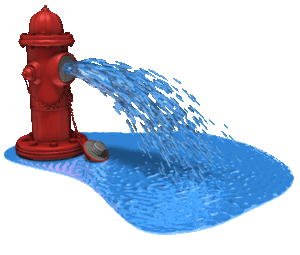 It’s time for the third part of our disaster planning process in honor of National Preparedness Month in the United States. Two weeks ago, I talked about assessing your home archive and research files and prioritizing the items you want to protect. Last week, we talked about making copies of important originals and other valuable items. This week:
It’s time for the third part of our disaster planning process in honor of National Preparedness Month in the United States. Two weeks ago, I talked about assessing your home archive and research files and prioritizing the items you want to protect. Last week, we talked about making copies of important originals and other valuable items. This week:
PROTECT PRECIOUS ORIGINALS. After you’ve duplicated your originals, take steps to preserve them. How exactly you do this depends on what you’re protecting; how much time and money you’re willing to spend; and how you plan to store or display them. The core strategy is to store them in appropriate archival materials away from direct light and extremes in temperature and humidity. No damp basements or hot attics! But what materials constitute safe storage are different for paper items, different types of photos or cloth, and electronic items, so you need to do a little research. (Hey, we genealogists are good at that!)
Several resources can help you learn more about giving your family artifacts the protection they need, including:
Disclosure: This article contains affiliate links and Genealogy Gems will be compensated if you make a purchase after clicking on these links (at no additional cost to you). Thank you for supporting Genealogy Gems!
by Lisa Cooke | Jun 17, 2013 | 01 What's New, Inspiration, Memory Lane, Organization, Photographs
 We genealogists often accumulate a lot of family “stuff:” original documents, old photographs and heirlooms. Though it’s wonderful to own them, it can be a serious challenge to keep them organized and documented.
We genealogists often accumulate a lot of family “stuff:” original documents, old photographs and heirlooms. Though it’s wonderful to own them, it can be a serious challenge to keep them organized and documented.
 Sunny’s 6 Tips for Organizing Your Genealogical Items
Sunny’s 6 Tips for Organizing Your Genealogical Items
1. Take stock of what you’ve got. Gather together all the original documents or photos, or take pictures of all your heirlooms, then review the entire collection at the same time.
2. Get rid of duplicates and stuff that doesn’t matter so much. You probably don’t really need all 10 of grandma’s quilts or those hundreds of scenic photographs from old family vacations. Rethink the 12-piece setting of china you’ll never use and grandpa’s tidy but prolific collection of nuts and bolts.
3. Carefully document and organize originals. Each kit includes supplies and instructions to help you safely identify each item. This is probably the most important step. We love our pictures, old letters and heirlooms because of the family connection. If that connection is lost, so is the value of the object.
4. Scan flat items and take digital pictures of dimensional ones. Keep these as “backups” in case the original is ever harmed. (The document and photo kits even come with Archival Gold CDs, which aren’t easy for genealogists to come by but perfect for long-term digital storage.) Use copies for reference and display, so you don’t expose your originals to everyday wear.
5. Store originals safely. The Heirloom Inventory kit includes suggestions for storing and displaying original objects. The document and photo kits include top-quality archival supplies and step-by-step illustrated instructions on how to store your stuff in them.
6. Share what you’ve got. Frame copies of your old photos and put them on the wall or a shelf. Keep copies of old documents handy to show relatives. Display your heirlooms. Use them all as conversation pieces whenever you get a chance. Tell stories about the people. Share memories that help other relatives understand why these items matter to you. That will help ensure that these items will live on in the family lore.

 1. Learn to preserve family artifacts.
1. Learn to preserve family artifacts. 2. Organize your “collection.”
2. Organize your “collection.” 3. Store your treasures carefully.
3. Store your treasures carefully. Telling the stories of the people that have come before us is also something that archivist try to do with the records they have in their care. Archivists do this by sharing their records collections with the public through displays, exhibits, and open houses. Genealogists should tell their ancestor’s stories by sharing their family histories with their families and passing down their ancestor’s stories to the next generation.
Telling the stories of the people that have come before us is also something that archivist try to do with the records they have in their care. Archivists do this by sharing their records collections with the public through displays, exhibits, and open houses. Genealogists should tell their ancestor’s stories by sharing their family histories with their families and passing down their ancestor’s stories to the next generation. Home Archiving, National Archiving: It’s all in the Genealogy Gems Podcast
Home Archiving, National Archiving: It’s all in the Genealogy Gems Podcast
 Don’t be intimidated by signing up for Backblaze, the cloud-based computer backup service I recommend.
Don’t be intimidated by signing up for Backblaze, the cloud-based computer backup service I recommend.








